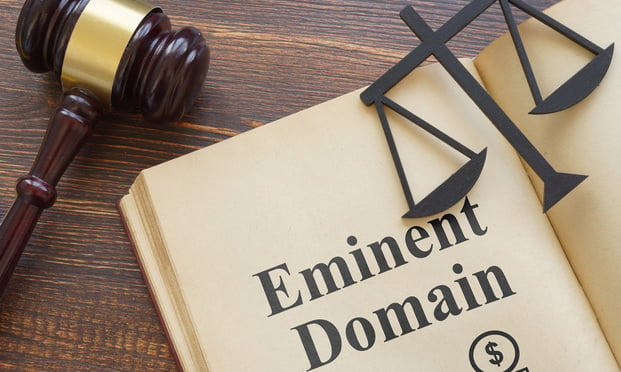Columns & Departments

Landlord & Tenant Law
DHCR’s Interpretation of Luxury Deregulation Rule UpheldIssues of Fact About High-Rent Vacancy Deregulation
Columns & Departments

Co-ops and Condominiums
Co-Op’s Refusal to Transfer Shares to Romantic Partner Did Not Constitute Housing DiscriminationCo-Op Had Right to Demand Removal of Whirlpool Tub
Features

Increasing Urbanization Revives Attractive Nuisance Doctrine
From parks and playgrounds to construction sites and urban farming initiatives, urban environments are becoming more complex, with new opportunities for residents and visitors alike. But with these changes come new challenges, especially for property owners. One of the biggest legal issues they may not even realize is impacting them: the “attractive nuisance” doctrine.
Columns & Departments

Real Property Law
Co-Tenant’s Adverse Possession Claim Raises Issues of Fact About HostilityBona Fide Purchaser of Property Sold At Foreclosure Is Protected Against Claims That the Foreclosure Sale Was ErroneousTown Not Strictly Liable for Emitting Pollutants Into Lake
Features

REITS Remain Optimistic In Face of DOGE Cuts
Publicly traded REITs remain optimistic in the face of potential widespread cuts to federal leasing at the hands of the Department of Government Efficiency because they serve agencies performing the work the Trump administration is prioritizing, including mission-critical agencies.
Columns & Departments

Development
Landowner Lacks Standing to Challenge Negative SEQRA Determination With Respect to Prohibition of Use On Its Own ParcelUDC’s Project Plan for Penn Station Area UpheldPlanning Board’s Grant of Site Plan and Special Permit Upheld
Features

Illinois Appellate Court Upholds Defense Counsel’s $21K In Attorneys Fees In Commercial Tenancy Dispute
A defense counsel’s award of over $21,000 in attorney fees in a commercial lease dispute was upheld in February by a three-judge panel for and Illinois appellate court, finding the plaintiff did not fully establish the shortfalls of the fee petition.
Columns & Departments

Eminent Domain Law
Condemnation Upheld Because It Did Not Interfere With Prior Public Use
Features

Effect of Trump’s Tax Plan on Commercial Real Estate
Many industry leaders, analysts, and pundits have broadly considered how the Trump administration’s and GOP-majority Congress’ plans might affect commercial real estate. The Deloitte Center for Financial Services looked at six key parts of the Tax Cuts and Jobs Act, which is set to expire by the end of this year, and the likely implications on domestic and global CRE.
Features

Lease Analysis Gives Win for Commercial Landlord In Bankruptcy Case
The Second Circuit ended a multi-year litigation by affirming a district court’s decision that a landlord’s appeal was “moot for lack of a remedy because, although [that] court [had properly] vacated the assignment and assumption of the lease …, the lease would not revert to [the landlord under Code] §365(d)(4), and that [the landlord] had no alternative remedy.”
Need Help?
- Prefer an IP authenticated environment? Request a transition or call 800-756-8993.
- Need other assistance? email Customer Service or call 1-877-256-2472.
MOST POPULAR STORIES
- The DOJ's Corporate Enforcement Policy: One Year LaterThe DOJ's Criminal Division issued three declinations since the issuance of the revised CEP a year ago. Review of these cases gives insight into DOJ's implementation of the new policy in practice.Read More ›
- How to TOOT Your Own Horn: Exceptional Self EvaluationsIt's that time again. As the year comes to a close many firms are beginning the associate review process. Even if your firm does not have a formal review process I recommend that you write a self-evaluation that outlines your achievements and specifies your goals for the coming year.Read More ›
- The FTC Gets Into the College Athlete NIL GameAs national champions are crowned in men's and women's basketball, hundreds of thousands of college athletes are entering the influencer marketplace for the first time and now find themselves attractive candidates in the fast growing influencer marketing arena. With influencer marketing potentially providing a 5x return on investment, many brands are eager to get into the industry, but it doesn't come without risks as the FTC Commissioner is taking a closer look at the use of influencers for marketing.Read More ›
- Use of Deferred Prosecution Agreements In White Collar InvestigationsThis article discusses the practical and policy reasons for the use of DPAs and NPAs in white-collar criminal investigations, and considers the NDAA's new reporting provision and its relationship with other efforts to enhance transparency in DOJ decision-making.Read More ›
- The DOJ's New Parameters for Evaluating Corporate Compliance ProgramsThe parameters set forth in the DOJ's memorandum have implications not only for the government's evaluation of compliance programs in the context of criminal charging decisions, but also for how defense counsel structure their conference-room advocacy seeking declinations or lesser sanctions in both criminal and civil investigations.Read More ›
